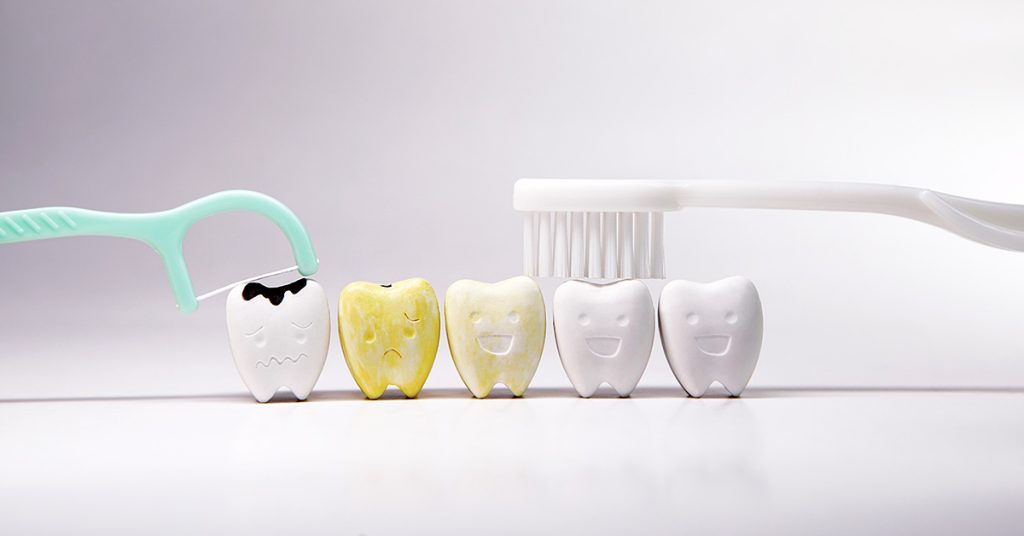Have you ever experienced the feeling of looking into the mirror and noticing the color of your teeth has changed? Tooth discoloration, which most of us put up with, is something common. It is when your teeth don’t look as bright and shiny as they should be, and their color has changed. According to Dr. Hmeidan, there are 2 main causes for teeth stains or discoloration: lifestyle habits, and dental health.
Teeth stains caused by lifestyle habits
The most common reasons for teeth stains are poor habits we have as part of our lifestyle. The 2 main habits can be divided into 2 categories:
- Foods/drinks: Coffee, tea, colas, wines, and some starchy foods such as pasta or potatoes, can create conditions that cause staining, Dr. Hmeidan says.
- Tobacco use: Smoking or chewing tobacco can stain teeth.
Teeth stains caused by dental health
According to Dr. Hmeidan, not caring for our dental health plays an integral part in our teeth ending up stained. Here are the most common causes:
- Poor dental hygiene: Forgetting to brush and floss your teeth can cause plaque and food stains to build up. Skipping professional dental cleanings can also allow stains to start.
- Disease: Diseases that prevent the normal development of tooth enamel (the white exterior of your teeth) and dentin (the more porous “yellower” core under enamel) can lead to tooth discoloration. Certain medical treatments, such as head and neck radiation and chemotherapy can cause teeth to discolor. Some infections in pregnant mothers can affect enamel development in your baby and discolor their teeth.
- Medications: It has been known for quite a long time that certain drugs discolor teeth in developing children. The antibiotics tetracycline and doxycycline can affect enamel formation in children under the age of 8. Mouth rinses and washes containing chlorhexidine and cetylpyridinium chloride can also stain teeth. Antihistamines (like Benadryl®), antipsychotic drugs and antihypertensive medications also can cause teeth discoloration.
- Dental materials: Some amalgam restorations, especially silver sulfide-containing materials, can give a gray-black cast to your teeth.
- Aging: As you age, the outer layer of enamel on your teeth gets worn away exposing the yellow dentin. Your tooth dentin also grows as you age, which decreases the size of the pulp. The translucency of the tooth reduces, making it look darker.
- Genetics: Thicker and whiter enamel runs in some families.
- Environment: During tooth formation, too much fluoride either from environmental sources (high fluoride levels in water) or from excessive use of (fluoride applications, rinses, toothpaste) can cause fluorosis, which look like white spots on teeth.
- Trauma: During sports, kids can get hit in the mouth. If they are younger than 8, the damage can disturb enamel formation. Trauma can also discolor adult teeth when a sports injury or other impact causes blood flow to decrease to the tooth or the nerve to die.
Of course, there are ways to fix this. By visiting your dental health professional, he will be able to advise you on what to do and which solutions to follow for your teeth to look bright and shiny again.
For effective oral care products, we recommend the Elgydium products




